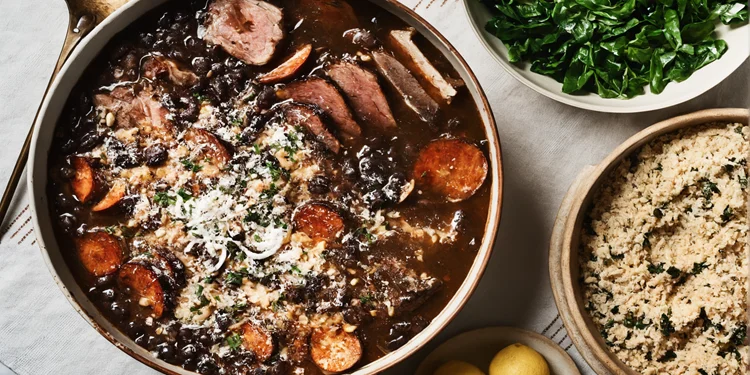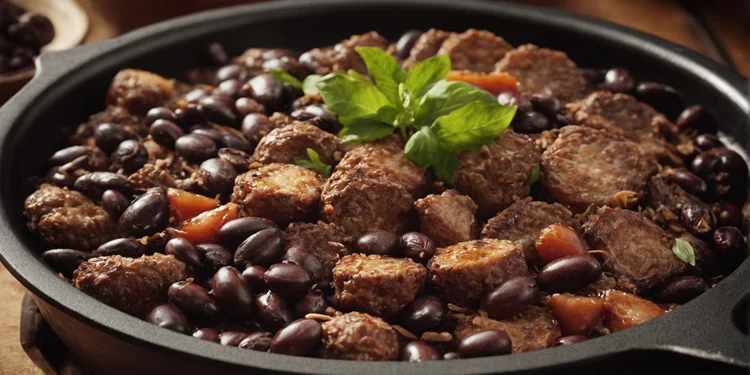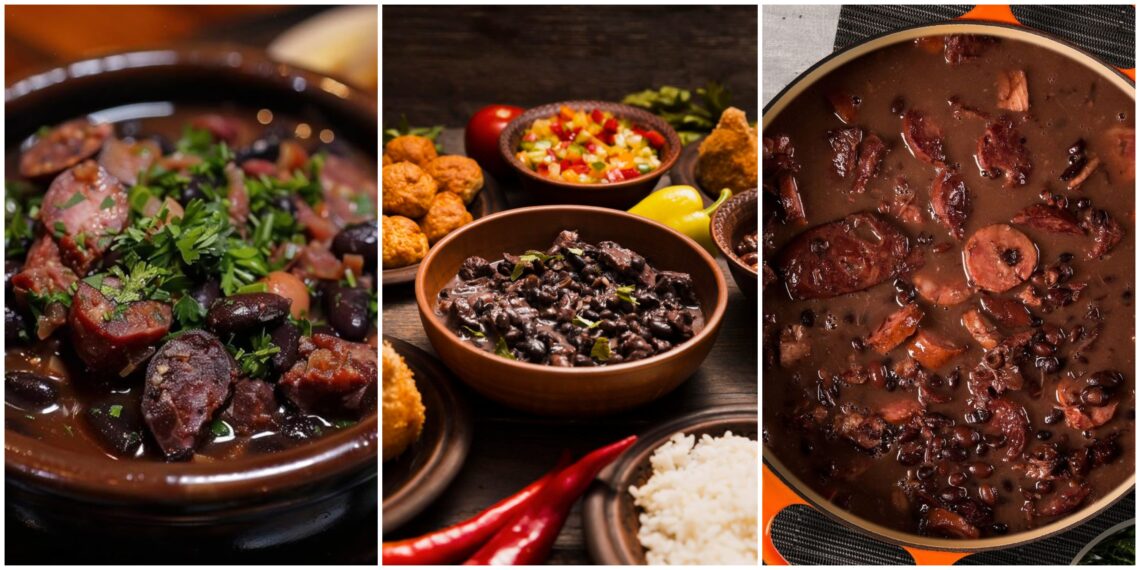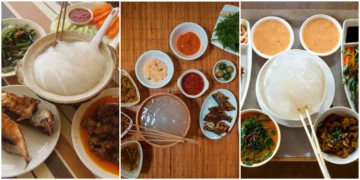Brazil is a country with incredible and diverse festivals, as well as lush rainforests and cultural heritage. In Brazil, there is a wide assortment of food, none more representative than feijoada, a hearty stew. More than just a dish, feijoada has evolved into a mark of Brazilian identity that celebrates history, community, and slow cooking. Regardless of its deep comforting flavors, feijoada mirrors Brazil’s complex past, marking it as a true culinary icon.
Why Feijoada is the Best Food of Brazil?

With the description, it is quite evident why feijoada is one of the most treasured dishes in Brazil: it captures the very essence of the nation. The rich and hearty dish is made primarily of black beans, meats, and spices. What makes the dish so appealing is how well it captures all the factors that embody Brazil.
Although once considered a meal for enslaved people using leftover cuts of pork, Feijoada has grown in popularity over the years and is now widely enjoyed. It is prepared during family get-togethers, and holiday celebrations, and even served at fine dining establishments. Feijoada is typically served on a large platter with rice, collard greens, orange wedges, and farofa (toasted cassava flour), which symbolizes the nation’s value placed on togetherness and sociability. It is traditionally consumed in a communal manner emphasizing friendship.
Key Ingredients of Feijoada
- Black Beans: Traditionally, black beans are soaked overnight before cooking to improve the taste and ensure that black beans are properly cooked. As the cornerstone of the dish, they provide a base and rich, earthy texture.
- Meats: Various cuts of pork such as pork shoulder, bacon, sausage, and trotters are included. In some regional variations, beef is also incorporated. As these meats gradually cook, they offer deep flavors and richness to the dish.
- Aromatics: Onions, garlic, and bay leaves form the flavor foundation that enhances the components even further by turning them into a complex blend of flavors.
- Spices: Cumin is added on occasion, but salt and black pepper are usually reserved for accentuating the dish.
- Optional Enhancements: Some recipes suggest including vinegar or a sprinkle of orange zest to add a delicate sharpness which, rather than overpowering, accentuates the richness of the stew.
- Accompaniments: While technically not part of the stew, traditional white rice, farofa, orange slices, and collard greens are served alongside and complete the Feijoada experience.
Prepare Feijoada

- Pre-Soaking the Beans: The dried black beans are soaked in cold water overnight. They require softening before cooking, as this shortens cooking time and helps to release the natural starches, which thicken the stew.
- Browning the Meats: In a large cast iron or traditional clay pot, several cuts of pork (and occasionally beef) are seared until browned.
- Building the Base: Once the meat is browned, chopped onions and garlic are sautéed until aromatic and translucent. Bay leaves along with several other spices are then added to boost the flavor profile of the broth.
- Simmering: The pre-soaked beans are drained and water or light meat stock is added to the pot. The stew is brought to a low simmer and left for several hours on low heat. While off the elemental heat, the Feijoada will cook slowly and enhance in flavor.
- Final Adjustments: During the final stage of the Feijoada cooking process, optional touches like a splash of vinegar or orange zest can be added along with salt and pepper to taste.
What Makes Feijoada Unique from the Rest of the World?
Feijoada is distinctive in its combination of tastes and cultural value, one of many bean and stew meals offered worldwide. Unlike single-flavor stews, Feijoada is a complex blend of sweet, savory, and tangy notes. This stew is now a national treasure, making it a symbol of unity and resilience.
Every spoonful is a delight to the palate due to the black beans and various meats combination. It results in a creamy yet chunky texture. In addition, the traditional sides of fluffy rice, collard greens, and farofa provide new textures and flavors that elevate the dish beyond its humble roots. Feijoada serves more than simply ingredients. It’s an experience of enjoying a meal that honors history while celebrating Brazilian culture’s diversity.
A Bite of History of Feijoada (Best Food of Brazil)

Feijoada has its origins in the history of Brazil’s colonial past. Enslaved Africans are believed to have made this dish out of less-desired cuts of meat. This dish is not just a source of survival, but rather Feijoada stands for culinary transformation. Now celebrated across Brazil, it is served in abundance on Wednesdays and Saturdays in restaurants and households alike, which has branded it ‘Feijoada day’. The dish has become a festive emblem that reflects the unison of Brazil’s society.
Other authentic delicacies from Brazil
- Moqueca: This seafood stew is made using Trinidadian palm oil, tomatoes, and coconut milk.
- Pão de Queijo: These cheese-filled bread rolls are tender and are dubbed to be ideal snacks or breakfast foods.
- Coxinha: A quintessential Brazilian street food, coxinha embodies fried dough filled with shredded chicken in crispy.
- Brigadeiro: Brazil’s beloved sweet treat brigadeiro is made of milk, milk powder, butter, and cocoa powder.
- Acarajé: Acarajé consists of deep-fried bean fritters and reflects Afro-Brazilian influences due to the spicy, tangy sauce.










Discussion about this post